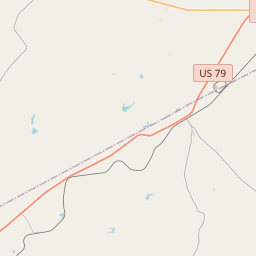St. Paul Shiloh High School
Historical marker location:
20145 FM 542, Oakwood, Texas
( Turn onto FM 542 at blinking light in Oakwood proper. Go7.9 miles south on fm 542 then turn left on CR 248 and go 125 feet to white mason structure at site on the left.)
Marker installed: 2016
Marker size: 27" x 42" with post







© OpenStreetMap contributors
About Texas State Historical Markers
As one of the most visible programs of the Texas Historical Commission (THC), historical markers commemorate diverse topics in Texas history, including: the history and architecture of houses, commercial and public buildings, religious congregations, and military sites; events that changed the course of local and state history; and individuals who have made lasting contributions to the state, community organizations, and businesses.
Loading...
Searching for other points of interest within 3 miles of this location.Texas is home to the world's largest bat colony. The Bracken Bat Cave, near San Antonio, is home to millions of Mexican free-tailed bats.
About Leon County
Leon County Timeline
Leon County, Texas has a rich and diverse history that begins with the Native American tribes who originally inhabited the region. These tribes, including the Caddo and Atakapa, lived off the land and utilized the plentiful natural resources of the area. The first European settlers arrived in the 1830s, drawn by the fertile soil and abundant wildlife. In 1846, Leon County was officially established, named after the Mexican War hero Juan Ponce de León.
During the mid-19th century, Leon County experienced rapid growth and development. The arrival of the railroad in the 1870s brought even more settlers to the area, and towns such as Centerville and Buffalo began to flourish. Agriculture played a vital role in the county's economy, with cotton, corn, and cattle being the main products. The county also became known for its timber industry, as vast forests provided ample resources for logging.
In the early 20th century, Leon County faced economic challenges due to the decline of the cotton industry and the Great Depression. However, the advent of improved road networks and the establishment of electric power brought some revitalization to the region. The construction of Lake Limestone in the 1970s provided a new recreational and economic opportunity for the county.
Today, Leon County maintains its agricultural heritage while also embracing modern developments. The county is home to a diverse range of industries, including manufacturing, healthcare, and tourism. Its natural beauty, with its rolling hills and tranquil lakes, continues to attract visitors from near and far. With a strong sense of community and a resilient spirit, Leon County preserves its past while embracing the future.
During the mid-19th century, Leon County experienced rapid growth and development. The arrival of the railroad in the 1870s brought even more settlers to the area, and towns such as Centerville and Buffalo began to flourish. Agriculture played a vital role in the county's economy, with cotton, corn, and cattle being the main products. The county also became known for its timber industry, as vast forests provided ample resources for logging.
In the early 20th century, Leon County faced economic challenges due to the decline of the cotton industry and the Great Depression. However, the advent of improved road networks and the establishment of electric power brought some revitalization to the region. The construction of Lake Limestone in the 1970s provided a new recreational and economic opportunity for the county.
Today, Leon County maintains its agricultural heritage while also embracing modern developments. The county is home to a diverse range of industries, including manufacturing, healthcare, and tourism. Its natural beauty, with its rolling hills and tranquil lakes, continues to attract visitors from near and far. With a strong sense of community and a resilient spirit, Leon County preserves its past while embracing the future.
Leon County Timeline
This timeline provides a condensed summary of the historical journey of Leon County, Texas.
- 1835: Leon County is created and named after Martín De León, a Mexican empresario.
- 1836: The Battle of Nacogdoches takes place during the Texas Revolution.
- 1837: The county seat is established in Leona.
- 1841: Centerville becomes the new county seat.
- 1861: Texas secedes from the United States and joins the Confederate States of America.
- 1870: The International-Great Northern Railroad is built through Leon County.
- 1883: The Houston & Texas Central Railroad extends its line to Centerville.
- 1927: The Texas oil boom reaches Leon County.
- 1950: The population of the county reaches its peak at around 22,000.
- 1998: The county is hit by a severe tornado, causing significant damage.
- 2021: Leon County continues to be a rural community with a focus on agriculture and outdoor recreational activities.